As we come to an end with our right heart blog series, we want to conclude with a comprehensive look at the role of hepatic vein evaluation to assess the right heart. We will break this down into 2 blogs this week. This first blog will cover the fundamentals of hepatic veins and the second part will review how the hepatic veins play a role in Tricuspid regurgitation (TR) and right heart failure.
We are going to discuss the fundamentals of hepatic veins, and how they relate to the heart. This blog will review:
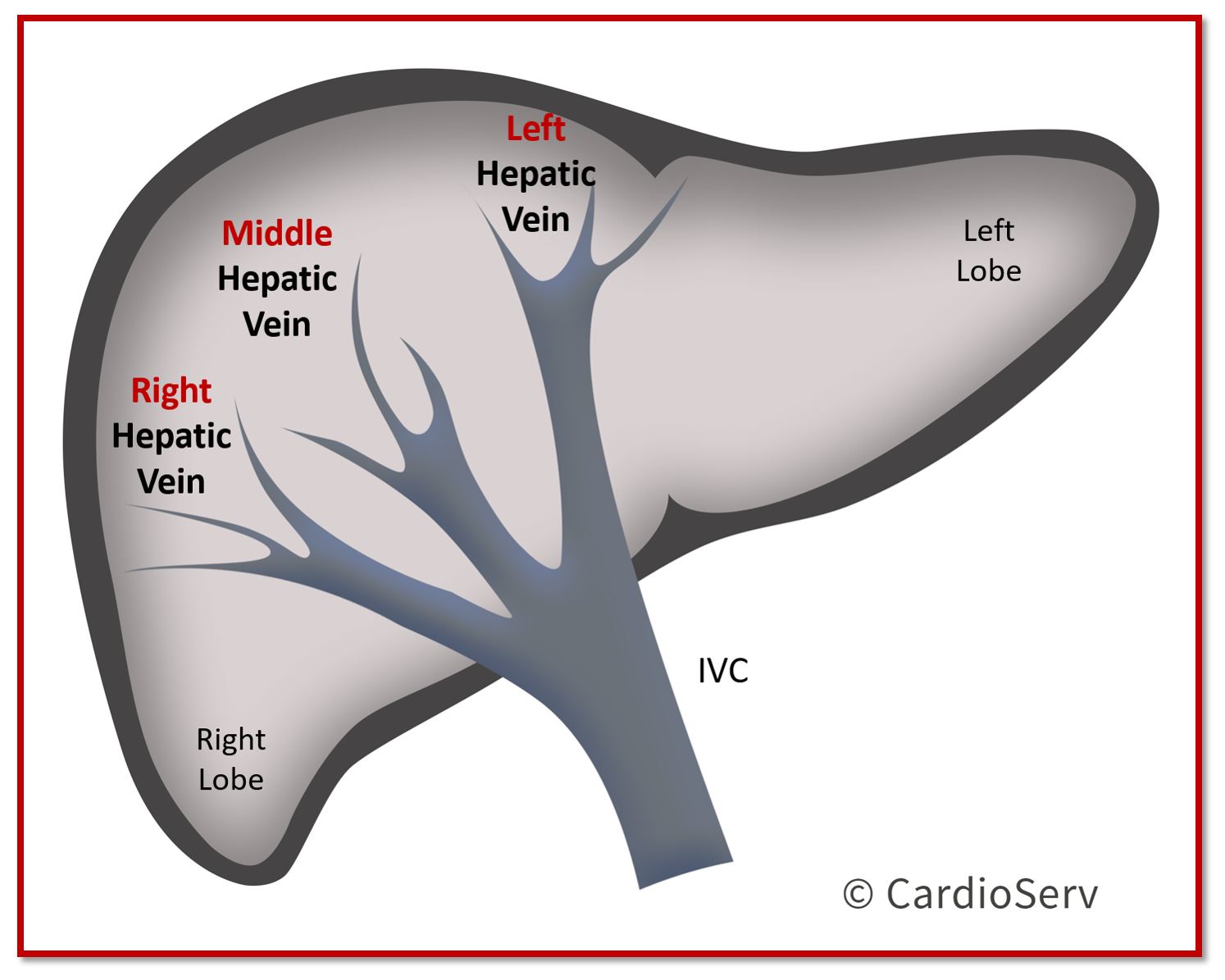
The hepatic veins transport deoxygenated blood from the liver to the inferior vena cava (IVC), which pumps the blood into the right atrium. From there, the right heart delivers the deoxygenated blood through the pulmonary artery (PA) to the lungs in order for the blood to get oxygenized!
When discussing the flow pattern for the hepatic veins, we must consider the blood flow pathway in regards to the circulatory system and transducer.
Antegrade: Flow towards the heart [away from transducer = blue]
Retrograde: Flow away from the heart [towards the transducer = red]
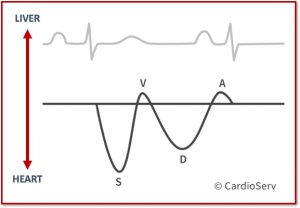
Hepatic Veins:
Antegrade: flow moving TOWARDS the heart
Retrograde: flow moving AWAY from heart (towards liver)
The hepatic veins are considered a phasic, predominately antegrade waveforms. They are composed of 4 parts: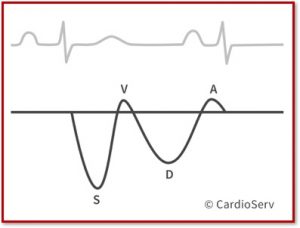
Let’s walk through each waveform and see how it relates to the cardiac cycle…
A-Wave: Atrial Systole

S-Wave: Ventricular Systole

V-Wave: Transitional Phase

D-Wave: Ventricular Diastole

To help with putting all this information together, take a look at this image:
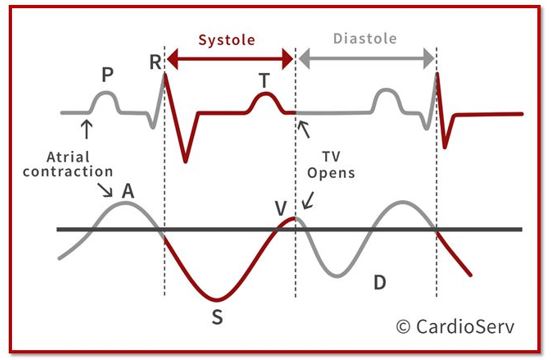
The hepatic veins can give us lots of information regarding both heart and liver abnormalities. Below is a short list of common abnormalities, that evaluation of hepatic veins can help diagnose:

When we look at the hepatic vein Doppler, we need to evaluate the waveform patterns and velocities. We should ask ourselves these questions to determine if the waveform is normal or abnormal:
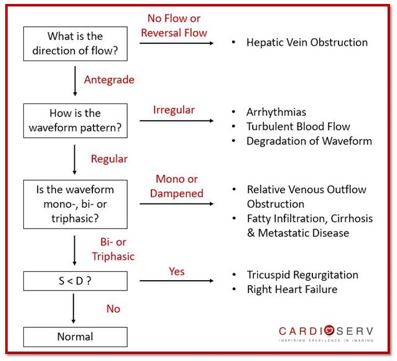
This week we are closing out our right heart blog series with a 2-part discussion of the hepatic veins. Here, in part 1 we reviewed the function and waveform patterns of the hepatic veins. We commonly forget the importance of the hepatic veins in regards to the right heart. In part 2 of this blog topic, we are going to discuss how the hepatic veins help determine severity of tricuspid regurgitation and right heart failure!

Andrea Fields MHA, RDCS
Stay Connected: LinkedIn, Facebook, Twitter, Instagram
References:
Scheinfield, M. H., MD, Bilali, A., ARDMS, & Koenigsberg, M., MD. (2009). Understanding the Spectral Doppler Waveform of the Hepatic Veins in Health and Disease. RadioGraphics,29, 2081-2098. Retrieved May 31, 2017, from http://pubs.rsna.org/doi/pdf/10.1148/rg.297095715
Rudski, L. G., MD. (2010). Guidelines for Echocardiographic Assessment of the Right Heart in Adults: A Report from the American Society of Echocardiography. JASE, 23, 685-713.




Jun
2017
Jun
2017
Jun
2017
Jun
2017
Jun
2017
Jun
2017
Jun
2017
Oct
2018
Jan
2019
Aug
2020
Aug
2020